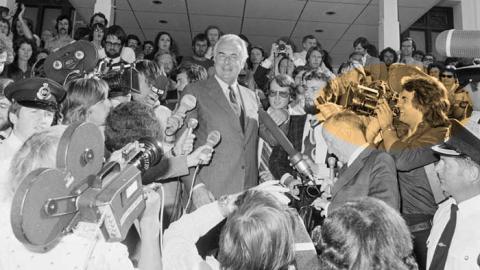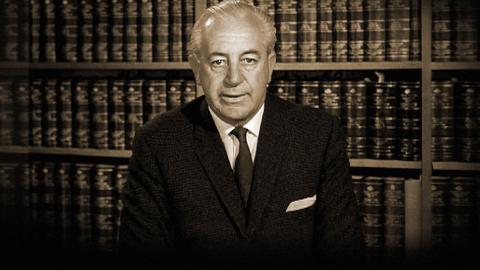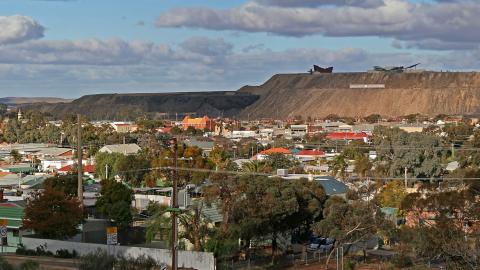
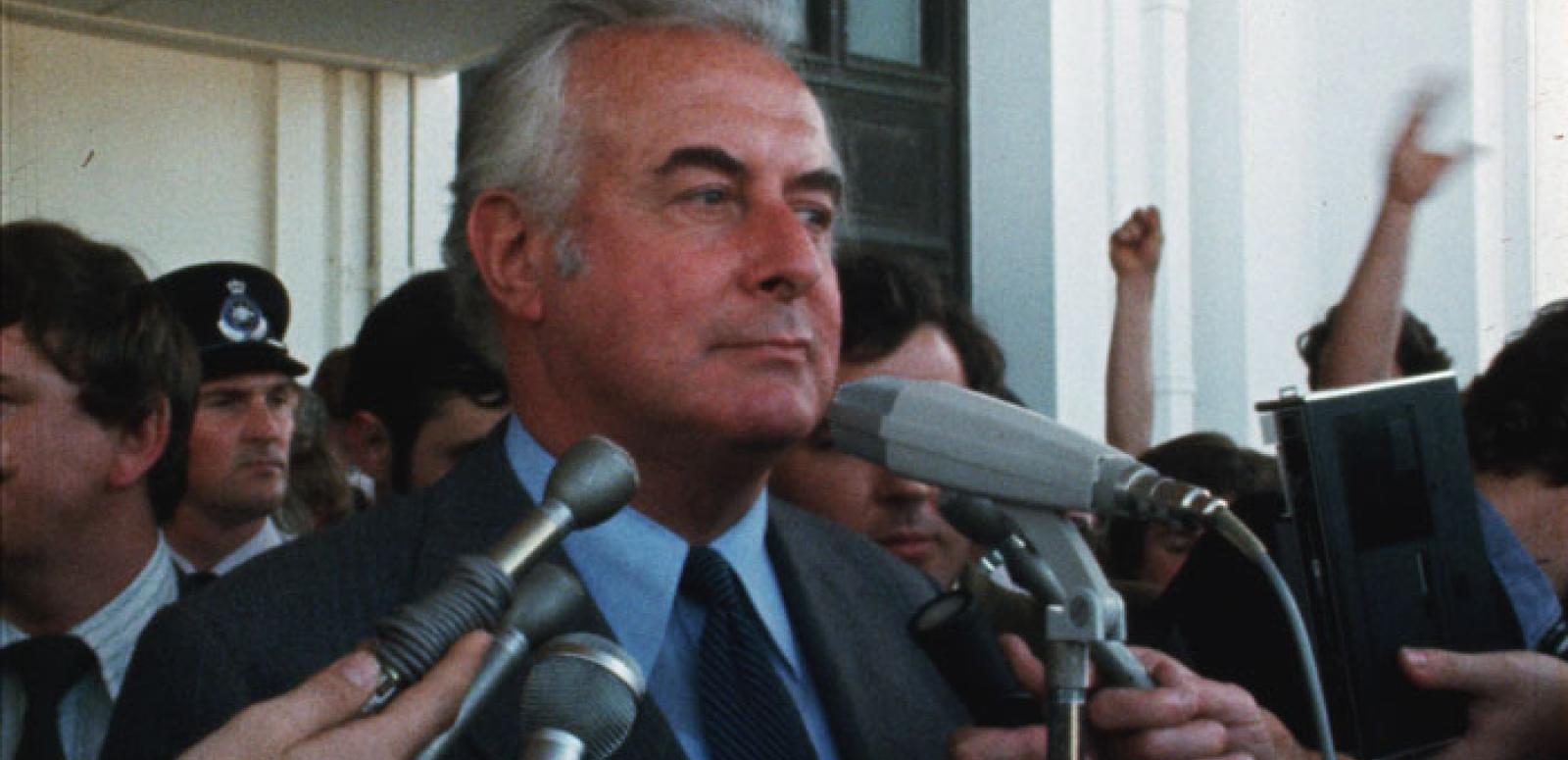
The Dismissal: news footage
The Dismissal: through the news camera lens
This speech by Gough Whitlam on the steps of Parliament House on 11 November 1975 is one of the most famous in Australian history. On the 40th anniversary of The Dismissal, we look at the unfolding events of the day from the perspective of two camera operators who filmed them.
Gough Whitlam’s ‘Kerr’s Cur’ speech on the steps of Parliament House (excerpt). NFSA: 554993
Bob Wilesmith and Ron Ashmore were working for Channel 7 and Channel 9, respectively. They shared their memories of 11 November 1975 in interviews conducted for the NFSA’s Oral History program.
Setting the scene
In 1975 the Whitlam government was accused of inept fiscal management, under fire for rising unemployment levels and embroiled in scandals such as the Loans Affair involving foreign commodity broker Tirath Khemlani. When Leader of the Opposition Malcolm Fraser failed to support the government’s budget legislation, Whitlam refused to call a general election. The ensuing impasse had serious financial implications.
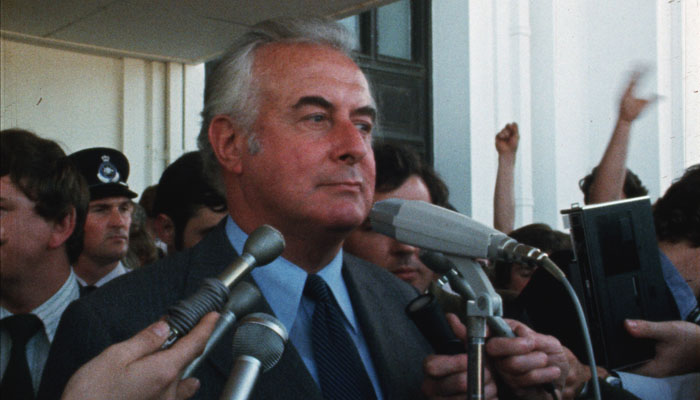
When Governor-General Sir John Kerr dismissed Prime Minister Whitlam, his Statement of Reasons issued on the day stated, ‘It has been necessary for me to find a democratic and constitutional solution to the current crisis which will permit the people of Australia to decide as soon as possible what should be the outcome of the deadlock which developed over supply between the two Houses of Parliament and between the Government and Opposition parties.’
Sir John Kerr’s decision to sack the prime minister was met with shock. People today still talk about where they were when they heard the news. At the subsequent election in December 1975, Malcolm Fraser won a convincing victory and succeeded Whitlam as prime minister.
The calm before the storm
Bob Wilesmith was working for Channel 7 in the Parliament House bureau. He remembers the feeling of expectation within the Canberra press gallery as the political impasse built pressure on the Whitlam government. For the news crews at Parliament House, Remembrance Day 1975 started like any other – door-stops with politicians and covering the wreath-laying ceremony at the Australian War Memorial:
During the calm before the storm, Bob recalled the first sign that something momentous might be about to happen:
Robert Wilesmith interviewed by Geoff Gardner (2014), Oral History.
Watching history happen
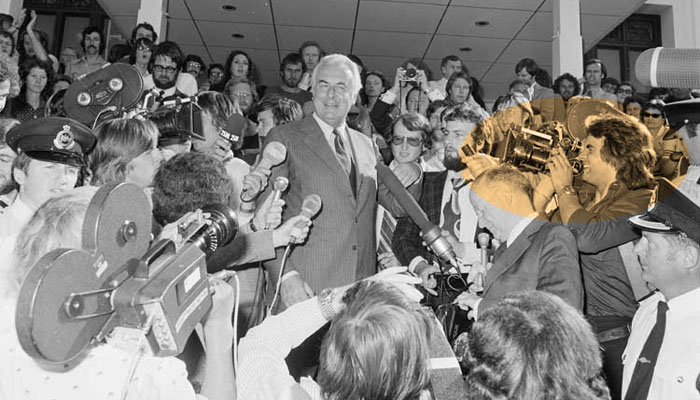
Ron Ashmore was a camera operator for Channel 9 in Melbourne. He was in Canberra with his assistant, John Bowring, and producer Doug Wooding to film a documentary on Jim Cairns and Junie Morosi as political history began to unfold before them.
Bob had been in the press gallery so he now knew that Governor-General Kerr had sacked Whitlam. He grabbed his camera and headed for the front steps:
Jeers and cheers
As Malcolm Fraser left by the front of the building, he received a hostile response from the crowd:
Malcolm Fraser leaves Parliament House amidst protesters. Courtesy of 7 Network Australia
Shortly after Malcolm Fraser’s departure from Parliament House, Gough Whitlam emerged onto the steps to be greeted by cheers.
The crowd gave the Governor-General’s Secretary, David Smith, a very different reception:
Gough Whitlam and David Smith on the steps of Parliament House
Norman Gunston and a cabinet reshuffle
Television networks scrambled to produce comprehensive coverage of the biggest news story of the year. As Ron Ashmore witnessed, this meant a slight reallocation of equipment and resources for the ABC:
Bob noticed a flurry of activity around the House of Representatives side of Parliament House and filmed filing cabinets being removed from Whitlam’s office into waiting vans:
Filing cabinets removed from Gough Whitlam’s office.
‘Here is the news’
It was now late in the day and time was running out for Bob to get the film processed in time for the evening news deadline. Leaving Channel 7 journalists Laurie Wilson and Mike Petersen to commandeer a passing car to take them to the CTC 7 studios in Watson, Bob rushed to the station where Canlab was processing the film. In consultation with Wilson, Bob edited the most important vision onto a smaller reel. He describes how the footage finally went to air:
In Part Two, we’ll explore the mystery of the missing film footage and take a behind-the-scenes look at the NFSA’s work in preserving these significant images and sounds for future generations.
The National Film and Sound Archive of Australia acknowledges Australia’s Aboriginal and Torres Strait Islander peoples as the Traditional Custodians of the land on which we work and live and gives respect to their Elders both past and present.
